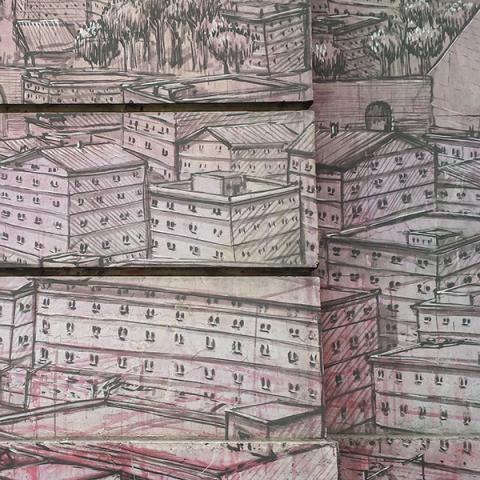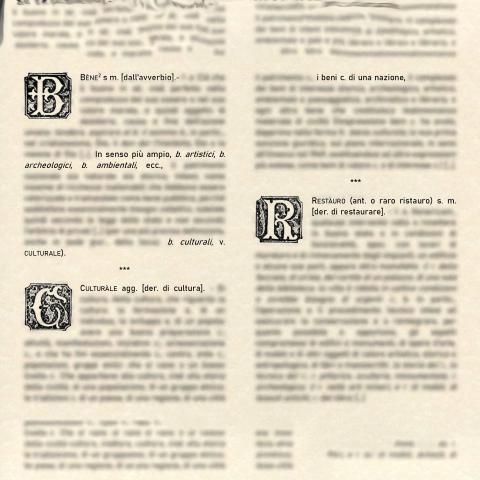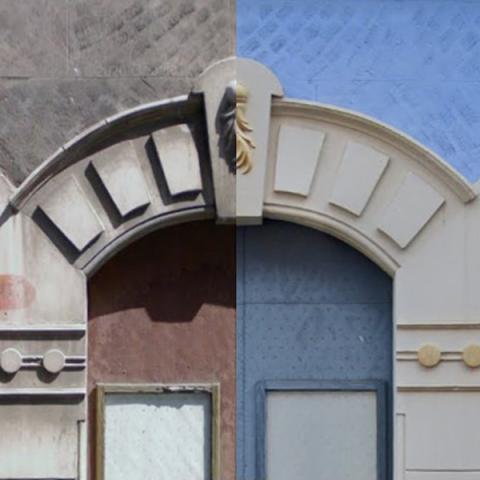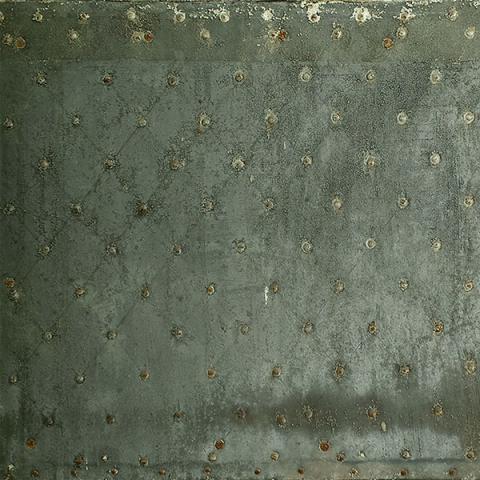Ingegnere e PhD, svolge libera attività di studio e di ricerca sui temi del restauro e della storia dell’architettura.
domenico.giaccone_2743
RIQUALIFICARE ATTRAVERSO I MURALES
I murales sono una delle manifestazioni più rappresentative della creatività umana nella contemporaneità. La loro esistenza è legata a un supporto, con il quale essi instaurano un rapporto simbiotico per nulla pacifico. Inevitabilmente la realizzazione di un murales comporta non solo la nascita dal nulla di un segno pittorico, foriero dei più disparati messaggi, ma anche la modifica dell’oggetto ospitante. In termini fisici questa si esplica attraverso il mancato rispetto della sintassi tipica dell’architettura – specialmente quella tradizionale – la negazione della geometria, dei decori e della materia originari. Spesso le modifiche sono destinate a durare per lungo tempo, con ripercussioni sulla percezione e sul significato dell’oggetto architettonico.
Refurbishment through murals
Murals are one of the most representative forms of human creativity in the contemporaneity. Their existence is linked to a support, with which they establish a symbiotic relationship, not at all peaceful. Inevitably, the making of a mural implies not only the birth from scratch of a pictorial sign, heralding the most disparate messages, but also the change of the hosting object. In physical terms, this is manifested through the disrespect of the typical syntax of architecture - especially the traditional one - and the denial of the original geometry, decorations and material. The change often lasts for a long time, affecting the perception and meaning of the architectural object.

COS’È IL RESTAURO? COSA SONO I BENI CULTURALI?
Il concetto di restauro e quello di beni culturali sono ormai familiari in campo accademico e non solo; ciò non comporta necessariamente che il significato attribuito ad essi sia univoco e condiviso. Il punto di vista di chi è esterno al mondo accademico rimane perlopiù ignoto; da qui è nata la curiosità di conoscere l’opinione pubblica circa il significato del restauro e dei beni culturali. Si è scelto di realizzare un sondaggio coinvolgendo giovani liceali e dalle loro risposte sono emersi alcuni punti di contatto con il pensiero accademico, ma soprattutto molte divergenze, una grande confusione, e una generale impreparazione circa la consistenza del patrimonio culturale.
WHAT IS RESTORATION? WHAT IS CULTURAL HERITAGE?
Nowadays, the notions of restoration and cultural heritage are popular with people belonging both to the academic field or not, however it is not necessarily true that the meaning attributed to them is univocal and shared. While the interpretation given by the members belonging to the scientific community is made known through papers, essays, conferences, … the point of view of people outside this group remains mostly unknown. Starting from this consideration, the curiosity was born to know public opinion about the meaning of restoration and cultural heritage. It was decided to carry out a survey involving young high school students. From their answers some points of contact with academic thought came up, but above all many divergences, a great confusion, and a general unpreparedness regarding the consistency of cultural heritage.

COMMITTENZA E RESTAURO
La pluralità di attori è una caratteristica delle operazioni condotte nel campo dell’edilizia, specialmente nel costruito storico. Fra questi soggetti, il committente ha un ruolo determinante, dal momento che sceglie a chi affidare l’incarico di progettazione dell’intervento, e si aspetta un prodotto rispondente alle sue specifiche esigenze. Quando l’edificio su cui si opera presenta particolari caratteristiche, il restauro si rende necessario, ma non sempre le richieste avanzate dal committente sono coerenti con i princìpi che stanno alla base dello stesso. Il progettista, dal canto suo, prende atto di questa visione in maniera quasi inerme; la sua integrità morale e il suo rigore professionale vengono messi duramente alla prova. Lo scritto racconta un caso reale di confronto fra committente e progettista su un intervento da condurre in un immobile di fine Ottocento, da cui sono scaturite alcune considerazioni circa il modo in cui il restauro è concepito da parte di chi è estraneo al settore professionale.
CLIENT AND RESTORATION
The plurality of the actors is a features of the operations carried out in the construction field, especially in historical buildings. Among the actors, the client has a key influence, since he chooses who to entrust with the task of designing the intervention, and expects a product reflecting his needs. When the building being worked on has special features, restoration becomes necessary, but the requests made by the client are not always consistent with the principles that underlie it. The designer, for his part, takes note of this vision almost helplessly; his moral integrity and his professional discipline are severely tested. The paper deals with a real case of debate between the client and the designer on a work to be carried out in a building of the late nineteenth century, from which some considerations have arisen, regarding how the restoration is conceived by peoples who do not belong to the restoration field.

I SERRAMENTI ALLANNATI
Nel dialetto siciliano sono definiti allannati quei serramenti foderati esternamente con uno strato di lamiera. Il contributo illustra le caratteristiche tecniche, costruttive, tipologiche dei serramenti allannati con speciale riferimento a quelli presenti nel centro storico di Misterbianco, comune catanese. Essi sono un elemento distintivo delle abitazioni locali, documento materiale di un sapere costruttivo antico, perciò meritevoli di essere recuperati.
COATED DOORS
In Sicilian language doors coated outside with a layer of sheet metal are defined “allannati”. The paper shows the technical, constructive, typological features of such a kind of doors, by referring to those in the historical centre of Misterbianco, near Catania. They are a distinctive element of local traditional houses, material document of an ancient building knowledge, so they deserve attention.

